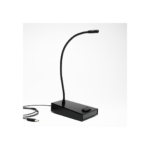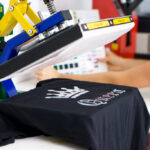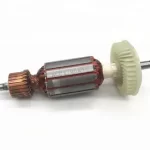When considering how to personalize t-shirts , many doubts arise about which technique to use. We use different techniques for T Shirt printing in Dallas and in this article we will discuss all those techniques. Screen printing, sublimation , transfer paper, textile vinyl, DTG or DTF?
They are all suitable, but you have to ask yourself several questions before choosing: budget? necessary material? composition and color of the t-shirt? Designs with many colors and details or simpler? durability?
In this post we offer you a comparative guide with advantages and disadvantages so that you know which technique to choose to professionally print t-shirts .
Serigraphy
The Screen printing is a printing technique that requires some learning . It is economical if medium and long runs of articles with the same design are made, since it requires an initial fixed cost with the preparation of the screen . With all the startup settings done, production is relatively straightforward .
With screen printing, you can print from simple designs to images with many colors and details . Its touch is soft , although a thin sheet is perceived on the fabric.
Another advantage is that it can be customized on fabrics of almost any composition and color , even on dark garments. In addition, it has great durability and resistance to washing.
The negative part of this technique is that the equipment investment can be somewhat high . Also, production start times are long due to the preparation phase of the screens.
If you want to try this technique there are very cheap starter packs . When you need to print different colors or have higher productivity, you can expand your investment by purchasing manual machines .
Sublimation
Sublimation is a personalization technique with a low initial investment . Its production is simple : an image is printed on paper, and transferred to a polyester fabric garment with a transfer iron.
You will need an inkjet printer, exclusively for sublimation since it will be equipped with inks and sublimation paper , and a transfer plate . The good thing is that in addition to garments you can also customize other items, so you can recover your investment quickly.
Another of its advantages is that it offers excellent graphic quality and durability when washing . It is one of the ideal techniques for reproducing photographic images. It has a very soft touch called “zero touch” , since the inks penetrate the fiber of the fabric.
The only limitation is that only white or light-colored polyester fabrics can be sublimated , ideally it would be 100% of this fabric. Remember that sublimation is only printed on polyester, so the higher the percentage, the better the garment will be sublimated. A minimum of 60% polyester is recommended. If you want to customize on cotton or dark colors we offer you some alternative systems that solve these limitations.
transfer paper
Transfer Paper is one of the cheapest and easiest techniques to use. It requires a paper that is printed with a laser or inkjet printer and applied to the garment with ironing.
You should know that there are CMYK laser printers and CMYK + white laser printers, the most recommended. With the white toner printer , you can print dark t-shirts of any fabric and other products such as cups or plastic sheets.
For best results, we recommend cutting the design with scissors or a cutting plotter. If you already have a home laser or inkjet printer, all you have to do is buy a vertical transfer plate and a suitable transfer paper: inkjet , laser or white toner transfer paper .
One of its advantages is that some papers can be applied with a domestic iron . In addition, it can be applied to any fabric that is not waterproof .
As a disadvantage, the shirts printed with transfer paper have low durability when washing , and they lose color progressively . You have to wash them inside out and with warm water. On the other hand, although its touch is soft, a sheet adhered to the shirt is perceived .
There are special transfer papers that we should mention: No cut papers ( light or dark backgrounds ) or Flex-Soft for laser printers. Due to their “self-cutting” nature, these sheets eliminate the requirement for a cutting plotter. It is a two – step technique and gives great results with white toner laser printers .
The good thing about this option is that you can print from a single unit , so stock costs are minimized. In addition, with Flex-Soft type paper you can make complex patterns that would be impossible on vinyl.
The bad , on some types of paper, requires a bit of learning to properly control the application.
We give you the opportunity to try all the types of transfer papers that exist with this Starter Pack for laser transfer paper on textiles . In this video, we explain what it includes and its different applications:
Printable or cut textile vinyl
Textile vinyls can be of two types: the so-called printable (which can be printable or sublimable ) and the ” cutting “ ones . Despite the name, both are cut with a plotter and attached to the garment using a transfer iron . The difference is that the printable is personalized on a printing plotter. While cutting vinyl, you just have to cut it with a plotter.
It should be noted that printable vinyl offers high quality and definition , making it perfect for capturing photographs. The advantage of cut vinyl is its great variety of colors and textures , being able to make very attractive combinations.
The virtues of this technique are several. It is an economical technique with good durability and resistance to washing , although the printables gradually lose color. Another of its advantages is its application on any fabric composition , as long as it does not have a water-repellent finish.
The downside is that you need a cutting plotter and the stripping process can be tedious depending on the design. In addition, as in most techniques, a laminated sheet is perceived . The good news? Each time the vinyls are thinner and are better integrated into the garment.
DTF or Direct Transfer to Film
DTF or Direct Transfer to Film is a new technique that consists of making a print on a film and then transferring it to a garment in a very simple way . With a low investment, it is one of the most versatile techniques, since you can print textiles of almost any type and color.
For this you will need a transfer iron . We recommend the Brildor XH-B2N iron , since it allows you to cure by being able to choose the height at which the plate remains.
You will also need a DTF kit . At Brildor we have created the pack “DTF transfer printing system” with which you will have everything you need:
- Modified A3 inkjet printer . As there are no printers dedicated to this technique, an inkjet printer with 6 ink channels must be adapted. This way, you will be able to print in CMYK + White. Includes another channel of white to make the base of the design
- CADlink Edition software to manage design printing
- Adhesive powder and printing film
- DTF textile ink
- Accessories to facilitate printing, configuration and maintenance of the equipment
Among its advantages we will highlight the quality of the color of the customizations. Also its soft texture and its excellent elasticity, since it does not crack when stretching the garment. In addition, it has good durability and resistance to washing.
As an inconvenience to say that the printer requires daily maintenance . As in any ink jet printer, the heads can be clogged . In this case it is even more common since white ink is used, which has a greater sediment than the rest of the colors. We have prepared this post explaining the main problems and their solutions .
The DTF can be an approach or initiation to DTG , a technique that you will see below. We leave you this video where you can learn more about this customization system.
DTG or direct printing
How to customize t-shirts with the DTG technique or direct printing ? As its name suggests, it is printed directly on the garment and then ironed to cure the inks. It is the ideal solution to personalize t – shirts from one unit and the cost per print is low .
All kinds of products can be personalized such as: sweatshirts, bags, backpacks, cushions, towels, jeans, slippers, baby clothes, sportswear, socks… Another of its advantages is the possibility of printing on dark colored fabrics by applying a simple pretreatment before.
The final result is a high quality print , being able to capture even photographs with many details. His touch is also one of his strengths thanks to the integration of the inks with the garment. And therefore, it has great durability and resistance to washing.









